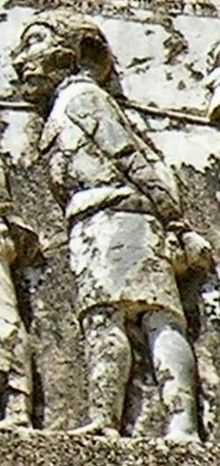Nebuchadnezzar IV

Nebuchadnezzar IV, also known as Arakha, was a self-proclaimed King of Babylon.
Biography
In 522 BC, with the disturbances that occurred after the death of Cambyses II and the proclamation of Bardiya as King, the Armenians revolted. Darius I of Persia sent an Armenian named Dâdarši to suffocate the revolt, later substituting him for the Persian Vaumisa who defeated the Armenians on May 20, 521 BC. Around the same time, another Armenian named Arakha ('Arakha' meaning 'crown prince' in Armenian), son of Haldita, claimed to be the son of the previous king of Babylon, Nabonidus, and renamed himself Nebuchadnezzar IV. His rebellion was short-lived and was suppressed by Intaphrenes, Darius's bow carrier.
According to Herodotus (Her. III, 70), Intaphrenes was one of the seven who helped Darius I usurp the throne from Smerdis the Magian (also known as Bardiya), who also usurped the throne from Cambyses II of Persia, for seven months, before and after Cambyses II death in 522 BC. Although that fact has come up for debate in recent years. Intaphrenes was also immediately put to death after the insurrection for trying to enter the King's palace while he was lying with his wife (Her. III, 118). During the siege of Babylon, according to Herodotus (Her. III 152-160), Zopyros, son of Megabyzos (who had also been part of the seven usurpers (Her. 111,70)), mutilated himself to gain the trust of the Babylonians and gained entrance to the near impenatrable fortress. After a period of time, Zopyros had earned their trust so much that he was entrusted with the keys to all the gates. When that day arrived, Zopyros opened the gates and let Darius I of Persia in and victory was assured. As to whether or not Zopyros was his bow carrier, there is no mention of that information. However, the name Intaphrenes was never mentioned again in Herodotus after Intaphrenes death (Her. III, 118), nor any other Intaphrenes. The siege started soon after Darius I accession to the throne in 521 BC and last more than a year and seven months (Her. III, 152), bringing the siege to an end in the year 520 BC.
See also
External links
- Nebuchadnezzar IV (Arakha), livius.org
| Regnal titles | ||
|---|---|---|
| Preceded by Nabonidus |
King of Babylon 521 BC |
Succeeded by Office abolished |